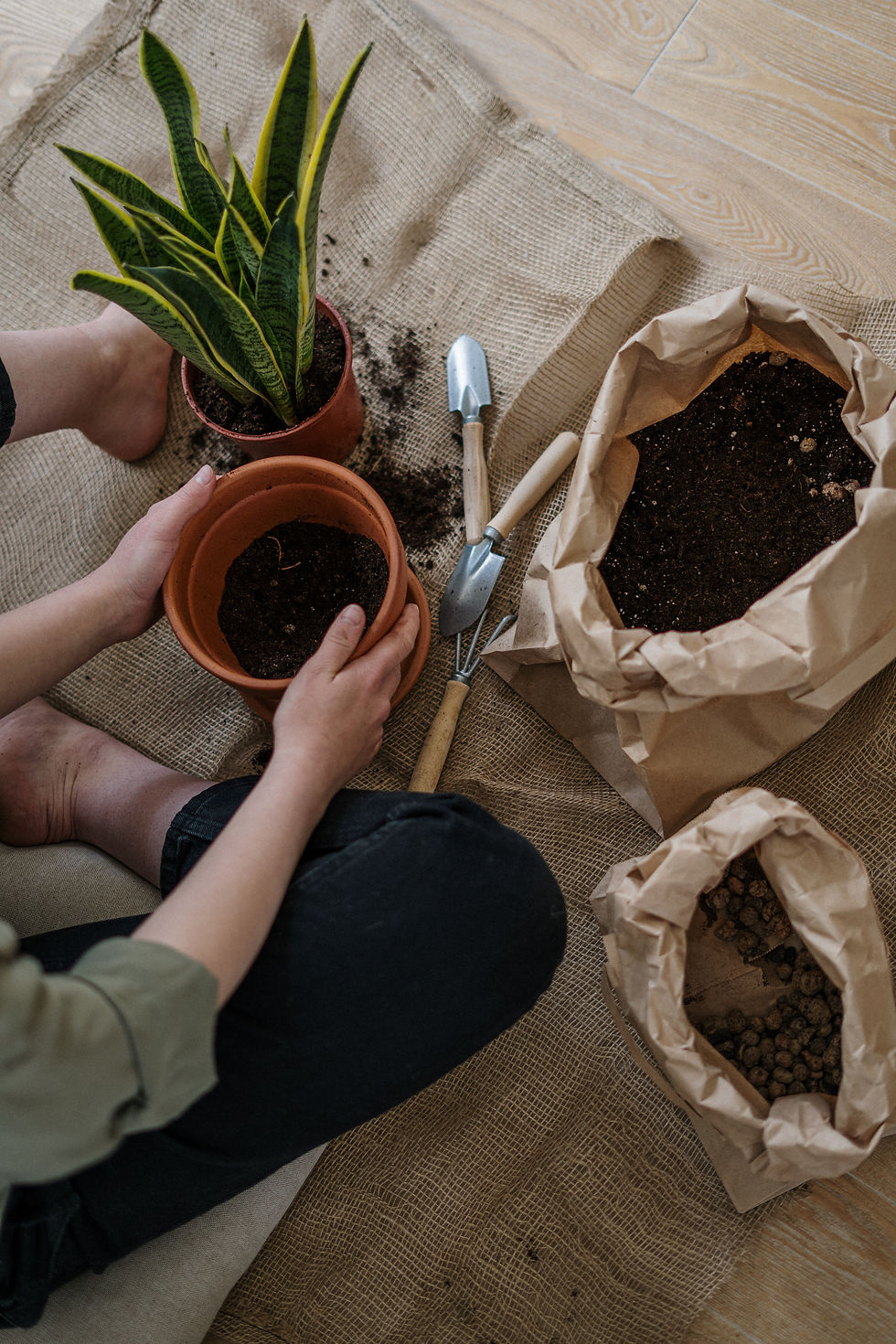How to Move Your Plants Outside
- Thorsen's Greenhouse

- May 10, 2022
- 3 min read
Updated: Jun 24, 2022
Just like humans, houseplants can benefits from being outside! That is where they originated from, after all. There are a lot of factors to consider before moving your plants outside, such as temperature, weather, and light conditions. We are here to answer all of your questions about moving your indoor plants outside!

Can all plants go outdoors?
Yes, all houseplants can go outside in the warm months, typically May-September. Just like us, plants love the outside fresh air, and the warm temperatures can promote increased growth!
When can plants go outside?
Watch the temperature! As soon as the outdoor temps are consistently above 50F, you can begin taking your plants outside! Keep an eye on the nighttime lows. If you notice the temperature is going to dip below 50F, we recommend bringing your plant in for the night. Plants will be okay with lower temperatures for a short period, but extended exposure can lead to stunted growth or leaf damage.

How should I acclimate my plant?
Acclimating your plant helps the plant adjust over a period of time and avoid the stress of sudden changes in environment, temperature, and light conditions. Start by placing your plant in a shady spot outside for a few hours and gradually increase the time it spends outside over the course of a week, until it is completely outdoors. For your plants that love direct sunlight, gradually increase the amount of sun they receive over the course of 7-10 days, allowing them to adjust to the intensity of the direct sunlight.
Where can I place my plant?
Most indoor houseplants originated from tropical areas, where they would grow along the forest floor in lighting that was filtered by the tree canopy above. You will want to mimic this environment when you place your plants outside. We recommend an area sheltered from the direct sun, for most plants. This might be under an awning or the shade of a tree. It is okay for most plants to receive morning sun, which is much less intense. However, make sure they are shaded by at least 10am, to prevent damage from the intense afternoon sun. Some plants can handle full sun, such as cacti and succulents. Keep in mind that all plants, even sun-loving plants, can get sunburnt! This might look like bleached leaves or brown tips and stripes on the leaves. The good news is that plants can recover! Move your plant to a shadier spot and trim the burnt leaves to promote new growth. You will also want to consider if the spot is protected from high winds, which can knock over plants and rip through leaves.

How does my water schedule change?
There are many factors at play which will determine how often you need to water your plants. Higher temperatures, light levels, and wind all lead to your plant using more water - meaning you need to water more often. While lower temperatures, light, and wind will lead to reduced water usage - meaning a longer period being watering. As always, be on the lookout for signs your plant needs watered such as drooping or faded leaves. You can also allow the natural rainfall to water your plant! About 1" of rainfall can replace a thorough watering. Make sure your have good drainage to prevent flooding your plant! Heavy rain can leach nutrients out of the soil. Fertilize regularly to replace these nutrients.
Other Tips?
Check your plant regularly for pests, which can be more common outside.
Summer can be a period of big growth for houseplants. You will want to make sure you are providing nutrients to promote growth, such as fertilizer and plant food.
Check in with your plant every day until you learn how your plant reacts to changes in temperature and weather.
Contact us here with any questions!
Like this blog post? Find similar content using the tags below.





What a refreshing topic! Giving houseplants a breath of fresh air connects us to nature and inspires mindful plant care. Just like plants need the right environment, laboratories require precision—discover ideal PUF Panel Laboratory Doors to maintain perfect lab conditions. When you need high-performance doors for your laboratory, choosing the right material is essential. If you're planning to buy PUF panel laboratory door 40mm or buy PUF panel laboratory door 50mm, you're making a smart choice for durability, insulation, and security. PUF (Polyurethane Foam) panels provide an ideal solution for maintaining a controlled environment in labs, where temperature, humidity, and safety are crucial.
Why Choose PUF Panel Laboratory Doors?
PUF panel doors are widely used in laboratories due to their…
Beautifully written! Your guide inspires plant lovers to reconnect with nature by transitioning their indoor greenery to the great outdoors. Just like nurturing plants needs care and planning, choosing the right criminal lawyer is essential for protecting your legal rights effectively. When you face criminal charges, hiring a criminal lawyer is the first crucial step toward securing a fair trial. Criminal defense lawyers specialize in defending individuals or organizations charged with criminal offenses, offering expertise and protection throughout the legal process. Whether it's a misdemeanor or a serious felony, skilled criminal defense lawyers ensure that your rights are upheld.
What Does a Criminal Lawyer Do?
A criminal lawyer is a legal professional who specializes in defending individuals or organizations accused…